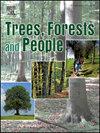在侧线以下敲打不会降低枫树汁产量或质量
IF 2.7
Q1 FORESTRY
引用次数: 0
摘要
现代枫树糖化作业使用真空管道系统来提高树液流量和产量。滴孔的位置是影响树木健康和树液产量的关键因素,但却受到滴管长度的限制。我们在两个地点对多个高真空 5/16 英寸管道系统上的 2200 多棵树进行了三季检查,在侧线上方和下方的不同高度进行了敲打。我们的分析表明,在侧线以下抽头,树液产量或糖分浓度没有明显下降。在侧线以上的极端高度进行抽头,树液产量略高(在丰产季节,估计每个抽头的树液产量为 0.6 升),树液甜度略高(0.06 °Brix)。然而,真空管理的不同对产量的影响更为显著。这些研究结果表明,在侧线以下攻丝能有效地将可攻丝区扩大一倍,而不会对树液产量或质量产生显著影响,从而在确保长期生产率的同时,不影响树液产量或质量,促进可持续的枫糖生产实践。本文章由计算机程序翻译,如有差异,请以英文原文为准。
Tapping below the lateral line does not reduce maple sap yield or quality
Modern maple sugaring operations use vacuum tubing systems to enhance sap flow and maximize yield. The positioning of tapholes is a crucial aspect influencing tree health and sap yields, but is limited by dropline length. Inverting droplines to expand the tappable zone and reduce the risk of over-tapping has raised concerns about vacuum efficiency and microbial contamination.
We examined over 2200 trees on multiple high-vacuum 5/16″ tubing systems at two sites over three seasons, tapping at various heights above and below the lateral line. Our analysis showed no significant decrease in sap yield or sugar concentration when tapping below the lateral line. Taps at extreme heights above the lateral line produced slightly more sap (estimated at 0.6 l of sap per tap for a good production season) and marginally sweeter sap (0.06 °Brix). However, differences in vacuum management had a more significant impact on yield. Additionally, there was no evidence of increased microbial activity or changes in sap pH due to relative tapping height.
These findings demonstrate that tapping below the lateral line effectively doubles the tappable zone without significantly affecting sap yield or quality, promoting sustainable maple sugaring practices by ensuring long-term productivity without compromising sap yields or quality.
求助全文
通过发布文献求助,成功后即可免费获取论文全文。
去求助
来源期刊

Trees, Forests and People
Economics, Econometrics and Finance-Economics, Econometrics and Finance (miscellaneous)
CiteScore
4.30
自引率
7.40%
发文量
172
审稿时长
56 days
 求助内容:
求助内容: 应助结果提醒方式:
应助结果提醒方式:


